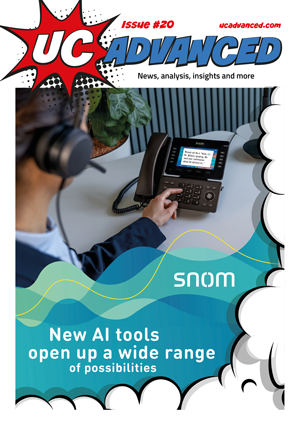8×8 and Cavell have released a new nationwide report highlighting tech and cyber challenges in the public sector, based on insights from senior public sector leaders. The findings reveal a digital crossroads: despite government AI initiatives and tech overhaul plans, many organisations still wrestle with legacy systems, fragmented platforms, and rising cyber risks.
The 2025 UK Public Sector CX Report lays bare the glaring gaps in digital maturity, strategy, and frontline service capabilities across local government, housing, healthcare and education. Highlighting the fragmented state of citizen engagement, the report shows common pain points but also the capabilities needed for public sector transformation.
“More than 80% of respondents are currently changing or intending to change their contact center provider in the next two years,” said Jamie Snaddon, EMEA Managing Director at 8×8, Inc. “That means there’s a chance to deliver a better future for public engagement for the majority – but the clock is ticking.”
Despite the government laying out an AI Action Plan and the proposed overhaul of tech usage in the public sector, the report findings expose a striking gap between ambition and reality. While leaders are eager to integrate AI to transform citizen services, most are still wrestling with outdated systems, security anxieties, and staff overwhelmed by too many disconnected platforms. The research uncovered several trends that consistently affect all four sectors surveyed:
Change Averse
Citizen communication habits remain omnichannel and despite digital advances, email (74%), phone (68%), and face-to-face (66%) remain the top contact channels; however social media (52%) and live chat portals (45%) are gaining traction.
Staff caught in Platform Sprawl
With AI adoption surging and public expectations at an all-time high, nearly a third (31%) surveyed argued their biggest challenge was “platform sprawl”. Platform sprawl refers to the uncontrolled growth and proliferation of platforms and services within an organisation, and often occurs when different teams or departments independently choose and deploy resources without a centralised strategy or governance framework.
AI and Data Integration Pressures
47% expect policies to encourage more AI usage within three years. Meanwhile, 74% have been tasked with increasing integration with other government bodies by 2030.
Security is still a key priority
34% of respondents say that improving cybersecurity and compliance will be their main strategic goal in 2030, and 33% said AI has forced an increased focus on data protection.
“Public sector organisations are telling us they’re at a critical turning point,” said Joe McStravick, Vice President, EMEA Sales at 8×8, Inc. “There’s a clear appetite to improve citizen services as expectations around AI, data, and omnichannel engagement delivery increase. But for many, delivery of the tools, and training on their use, is not keeping pace – and that’s often down to budgets.”
Tools that aren’t fit for tomorrow’s purpose
“While there is no shortage of ambition, the reality is that fragmentation, outdated technology, and security concerns are still widespread,” said Finbarr Begley, Senior Analyst at Cavell. “The issue is budget, which means the path forward will demand strategic focus, better vendor partnerships, and a renewed investment in people and training. With the right platforms and policies, public sector organisations can not only meet rising expectations – they can exceed them, creating smarter, faster, and fairer services.”
Implications for the future of CX in the public sector
With 59% of public sector leaders saying AI will be the most transformational factor in contact centers by 2030, the research shows most organizations are still early in their AI journey. While there is a focus on improving call routing, training, proactive citizen engagement, and self-service, many lack the infrastructure or insights to scale effectively.
Concerns over security, cloud transition risks, and regulatory obligations influence buying decisions. The most important vendor selection criteria cited across all sectors include product functionality, brand reputation, and expertise in compliance and integration, with the mean average for changing contact center providers taking one year and three months.
“These challenges speak to why unified CX matters more than ever,” added Snaddon. “Public service teams want to deliver better outcomes, but fragmented systems and inconsistent citizen experiences hold them back. A single secure, AI-powered CX platform can give them the data, insights, and flexibility they need – whether that’s streamlining calls, improving accessibility, or helping mobile teams stay connected in the field.”












